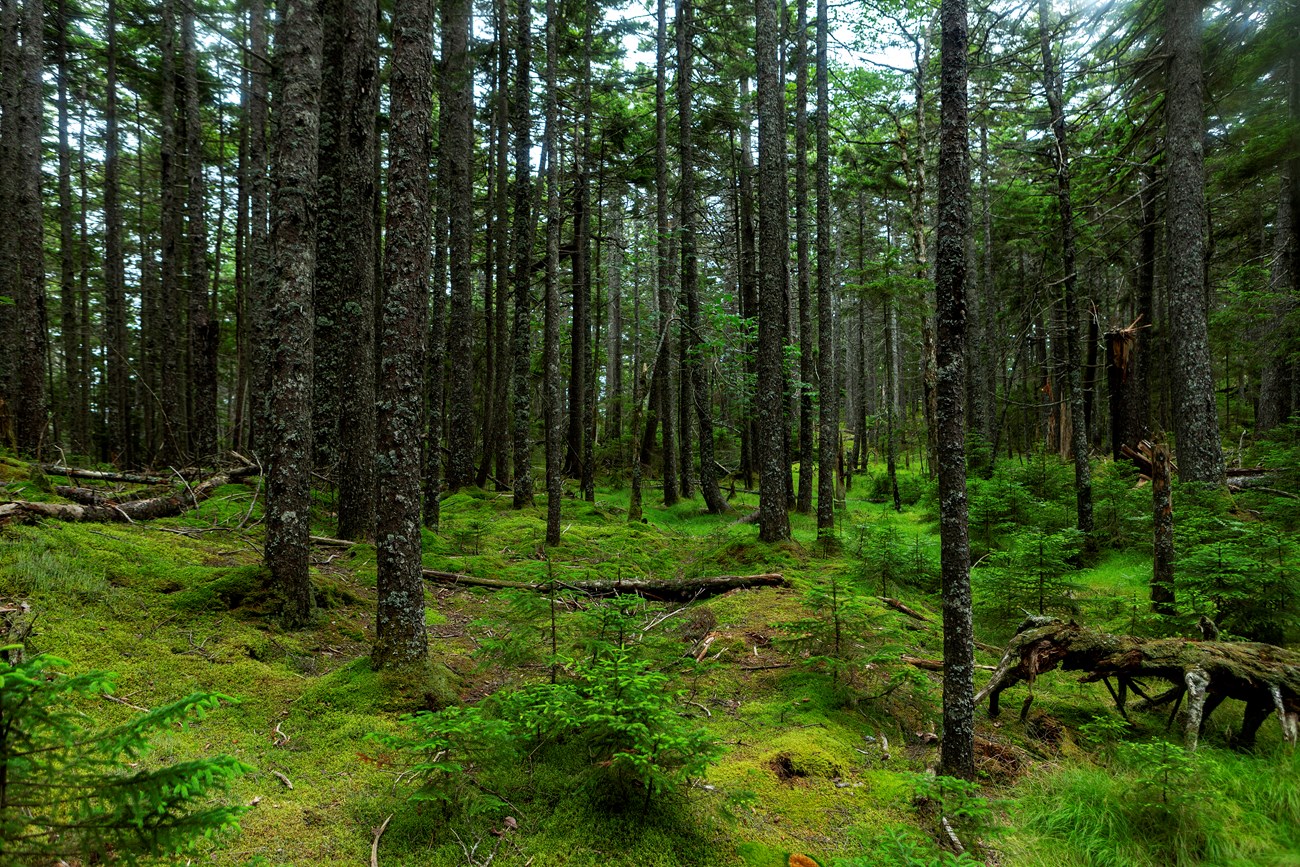
Photo by Ashley L. Conti, Friends of Acadia, NPS A World Between Two WorldsAcadia National Park is home to diverse plant life in part because it exists in the boundary area between two forest zones - eastern deciduous forest and northern boreal forest. Eastern deciduous forests are more southern and are typically dominated by broad-leafed trees that drop their leaves every year such as oaks, maples, and beeches. Northern boreal forests stretch down from the artic and are dominated by evergreen trees, or conifers that mostly keep their deep green leaves, called needles, year-round. These types of forest are more dominated by spruce and fir trees and moisture-loving deciduous trees such as birch. A Walk Through the EvergreensAcadia’s iconic trails wind through a dark, dense forest, where wooden walkways protect a thick carpet of moss underfoot. Evergreens trees like red spruce, white spruce, and balsam fir characterize the canopy of this coastal forest. These trees, along with co-occurring white pine, eastern hemlock, and northern white cedar, are all conifers—a related group of trees that produce cones.The forest floor is shaded by this dense canopy above. Young canopy trees below seek out what light trickles through and await opportunity among shrubs like lowbush blueberry and low ground covers such as bunchberry and wintergreen. Several different species of moss cover much of the forest floor and soften the sounds of the forest. Lichen and mushrooms grasp onto the ground, rocks, or trees and provide a bright pop of color and texture to the deep green environs. Within the silence of this sheltered forest, birds such as woodpeckers or forest song birds can be heard, along with the rustling footsteps of animals such as squirrel and deer. There is also a silent world, that you cannot hear, such as the flight of a soundless owl or the slow march of an insect. In winter, ice and blankets of snow cover the evergreen landscape with white. A Walk Through TimeThe forests within the current boundaries of Acadia National Park are not untouched as people have been working these woodlands for 12,000 years. Wabanaki people have lived in relationship with these forests since time immemorial and this continues to be the Wabanaki homeland. The Ash tree is particularly important to Wabanaki heritage and craft. Vibrant wabanaki communities cleared land using fire and harvested food from the woodlands. European colonizers and settlers developed pastures and farmland, and harvested resources such as timber and ice to survive in this harsh climate. In the 1700s and 1800s, ship-building and logging industrialized the scale of impacts to the forests and across the state of Maine wide swaths of land were logged. An Uncertain FutureAs the climate changes, the suitable habitat for spruce-fir forest species will shift northward, affecting not just the trees in the forest, but the relationships among all living things. Invasive diseases and pests are killing large swaths of trees as climate change weakens their defenses.The invasive Emerald Ash Borer insect is eradicating ash trees and the Hemlock Wooly Adelgid has been recently discovered in the park, threatened park Hemlocks. The Red Pine Scale has lead to huge die-off of red pine. |
Last updated: November 1, 2023
